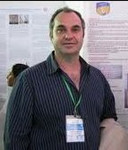
The oil price, which drives the world’s economy, is currently in a lull at $106 per barrel, but this will not last, and we can expect prices to rise again. Luckily, there are people working on sustainable alternatives, among them Professor Brett Pletschke of the Department of Biochemistry and Microbiology.
Professor Pletschke’s passion is harnessing the power of enzymes to sustainably fuel the bio-economy, and at the same time, clean up the environment. In his Inaugural Lecture recently, he listed a few alarming facts: a 3.3 degree C increase in temperature can be predicted to 2050 with the continued reliance on fossil fuels, even if the pledged reductions of carbon emissions occurs.
A rapid increase in the reliance on methane or natural gas is being seen and by 2050 it is predicted that it will be our primary energy source. Renewable sources of energy are not growing nearly as fast as the increase in reliance on natural gas; it is anticipated that fracking, which releases methane or shale gas, will peak at around 2050 and SA has the 8th largest deposit of shale gas in the world. Fracking requires huge quantities of water and it pollutes the water it does use, which in an arid country like South Africa means tough choices lie ahead.
So what is a bio-based economy? As Professor Pletschke explained, it is one which produces Value Added Products or VAPs. The most well-known biomass is cellulose-based (plant material) and while the fossil fuel economy is driven by the oil-rich countries, biomass richness rests in parts of Africa and South America.
Therefore a shift to the bioeconomy would result in a power shift and a flatter, more equitable world economy. Early biofuels utilised biomass from edible crops, however competition with the food stock supply is no longer regarded as ethical.
Second generation biofuel production comes from plants which include micanthus and eucalyptus hardwoods, bagasse (the inedible remains of sugar cane), and corn stover which is what remains after everything edible is removed from the corn.
Lignocellulose (containing cellulose) is the most abundant renewable biopolymer on the planet and can be used to produce bioethanol. To achieve this, a suite of enzymes is utilised to digest the lignocellulose to its basic building blocks, namely sugars, which are then fermented to alcohol by specialised yeasts. There is a research race on to create more effective enzymes and to gain a better understanding of how they work together optimally.
Professor Pletschke outlined some of the research he and his postgraduate research group have undertaken. Among these is a project exploring termite derived enzymes in great detail by looking at symbiotes in the gut of a termite which has a mutually beneficial relationship with its host. These symbiotes are specialised microbes not found elsewhere and which do not grow in culture.
The next step in the exciting progress towards a bioeconomy is research towards expanding the value chain beyond biofuels, looking at further VAPs and moving into nanochemical and bioprocess development studies.
By Jeannie Mckeown
